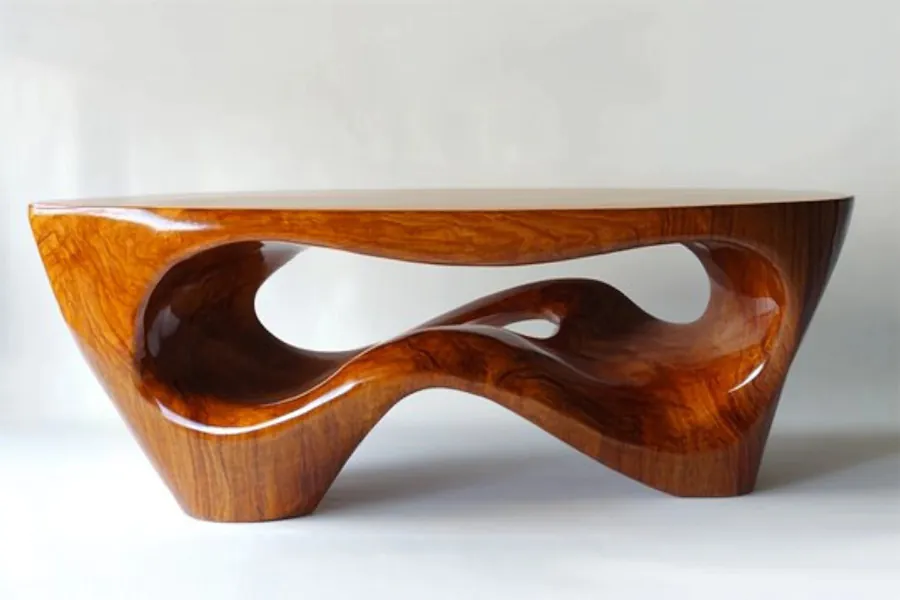Sculptural coffee tables are functional pieces of furniture that double as artistic statements, seamlessly blending utility with aesthetic appeal.
Introduction to Sculptural Coffee Tables
Unlike traditional coffee tables, sculptural coffee tables are designed to serve as focal points within a space, often featuring bold forms, intricate details, and unique materials. They transcend conventional design by incorporating elements of sculpture, making them both practical surfaces and conversation pieces.
History and Origins of Sculptural Coffee Tables
The evolution of sculptural coffee tables can be traced back to the mid-20th century, notably with designs like Isamu Noguchi’s iconic 1947 coffee table, which combined a biomorphic glass top with a curved wooden base, exemplifying the harmony between form and function. This approach has continued to influence designers, leading to a variety of interpretations that emphasize artistic expression in everyday furniture.
Key Features of Sculptural Coffee Tables
- Artistic Design: These tables often feature unconventional shapes and forms, transforming them into centerpiece artworks within a room.
- Material Diversity: Crafted from materials such as wood, metal, glass, and ceramics, sculptural coffee tables showcase a wide range of textures and finishes. For instance, ceramic furniture has seen a significant rise, with artists creating larger, functional pieces from clay, adding unique textures and forms to interiors.
- Functional Art: While serving the practical purpose of a coffee table, these pieces also contribute to the aesthetic narrative of a space, reflecting personal taste and style.
Applications of Sculptural Coffee Tables
Sculptural coffee tables are versatile and can be incorporated into various settings:
- Living Rooms: As central pieces, they provide a functional surface while elevating the room’s design with their artistic presence.
- Offices: In reception areas or executive lounges, a sculptural coffee table can serve as a stylish focal point, offering a surface for magazines or refreshments.
- Boutiques and Showrooms: Retail spaces can use these tables to display products in an eye-catching manner, enhancing the overall aesthetic of the environment.
Considerations When Choosing a Sculptural Coffee Table
When selecting a sculptural coffee table, consider the following factors:
- Size and Proportion: Ensure the table’s dimensions are appropriate for your space, allowing for comfortable movement around it and proportional balance with surrounding furniture.
- Material and Maintenance: Choose a material that aligns with your lifestyle and willingness to maintain it. For example, glass surfaces may require frequent cleaning, while certain metals might develop patina over time.
- Design Harmony: Select a table that complements your existing décor and reflects your personal style, ensuring it enhances rather than overwhelms the space.
Conclusion
Sculptural coffee tables offer a unique blend of functionality and artistry, making them a distinctive addition to various interior settings. By thoughtfully selecting a piece that aligns with your aesthetic preferences and practical needs, you can enrich your space with a coffee table that serves as both a useful surface and a work of art.
